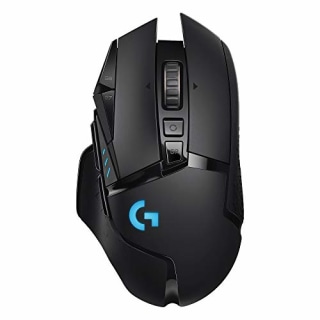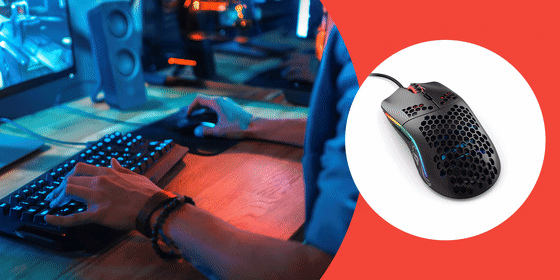
The 5 best gaming mice, according to a tech expert
Here’s how a tech expert thinks you should shop for your next gaming mouse — and some of his top recommendations.
Whitson Gordon


Whitson Gordon


Razer is the other big name in gaming peripherals, and their Basilisk Ultimate offers a number of unique features over other mice. For one, its buttons use optical sensors rather than mechanical, which allow for oh-so-slightly more responsive actuation and increased longevity. It also allows you to adjust the tension of the scroll wheel, which is cool—but not as useful as Logitech's momentum-based scrolling, in my opinion. It's more expensive, but if you like the extra features, it—along with its wired sibling—are great alternatives.
If you don't want to spend $50 to $100 (or more) on a mouse, Logitech's G203 gets you the important bits for a much more affordable price.
It comes with six buttons, an adjustable sensor (up to 8,000 DPI) and a comfortable (albeit smaller) shape with solid build quality all around. There's also a wireless version for not much more money if you really can't stand wires.
A new trend has risen in the past few years: ultra lightweight mice featuring a honeycomb design that cuts down on as much mass as possible. This allows for super quick movements in first-person shooters, and has become popular among seriously competitive gamers.
While the Glorious Model O isn't the absolute lightest on the market, it's in the upper echelon with a quality sensor and a comfortable shape.
Designed for massively multiplayer online games like World of Warcraft, the Razer Naga series adds a ton more buttons to the side of your mouse, so you can slot in as many shortcuts to spells, items and weapons as your heart desires.
The Naga Trinity contains three removable plates, too, so you can adjust the button layout. It comes in wired, wireless and even left-handed configurations.
Gaming mice, as their name implies, have a few extra features specifically designed for the virtual battlefield, arena or level. As you shop, here are some things to consider.
Everyone's hands are different — there's no one mouse that's right for everyone. If you have larger hands, a larger mouse will likely be more comfortable, and if you're left-handed, you'll want an ambidextrous model that skips the asymmetrical right-handed design.
Lighter mice are easier to move, while different shapes contour to the different grips people use — so if you find one mouse doesn't fit comfortably in your hand, return it and try another.
For a long time, wired mice were the primary choice for competitive gamers who wanted the lowest latency possible. These days, many wireless gaming mice are more than fast enough to cover gaming needs, though they do cost more and require occasional recharging.
Some gaming mice stick to conventional two-button layouts while others cram extra buttons into every nook and cranny as shortcuts for your spells or other weapons.
Some people like having those extra shortcuts while others don't use them much at all.
While gaming mice like to one-up each other with higher and higher sensitivity ratings (measured in DPI), most quality gaming mice should work on most desk surfaces with high enough sensitivities for most players.
Having an adjustable sensitivity, though, is handy as it tends to be more precise than Windows' built-in sensitivity slider.
Catch up on Select’s in-depth coverage of personal finance, tech and tools, wellness and more, and follow us on Facebook, Instagram and Twitter to stay up to date.